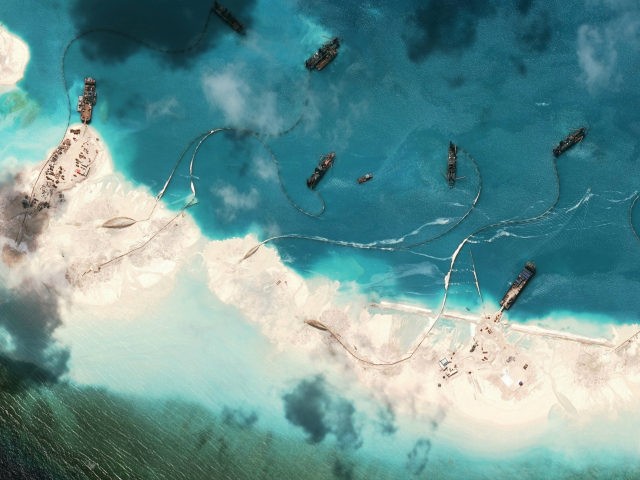Following rumors that the government of China is considering establishing an air defense identification zone (ADIZ) over disputed territories in the South China Sea, Taiwan’s new defense minister confirmed the island would not respect such a zone if Beijing attempts to impose it.
Defense Minister Feng Shih-kuan, recently appointed by new president Tsai Ing-wen, issued a statement to the nation’s parliament Monday confirming that his government would ignore any ADIZ over Taiwanese territory, including in the South China Sea. An ADIZ would require any non-Chinese aircraft navigation within its borders to immediately identify itself to the Chinese military and ask permission to transit. Ignoring the ADIZ could result in an attack by Chinese aircraft.
It is unclear whether China would consider Taiwanese aircraft foreign as Beijing has long held that Taiwan is not a sovereign nation but a province of Beijing.
Rumors began to surface in international media last week that the Chinese government may impose an ADIZ over the region known as the “nine-dash line” as this is the map tool China has used to demarcate it. The expansive region, which China claims as exclusive Chinese territory, spans over the sovereign maritime territory of Brunei, Vietnam, Malaysia, Taiwan, and the Philippines. The Philippines brought a case to the Permanent Court of Arbitration at the Hague earlier this year calling for a ruling that resolves the overlapping borders, a ruling Beijing has vowed to ignore regardless of the outcome.
Last week, the South China Morning Post published a report citing unnamed sources within the Chinese government as stating that an ADIZ declaration may be imminent in the region. Chinese Foreign Ministry spokesman Hong Lei received a question about the report shortly after it surfaced, to which he replied: “Many countries have set up ADIZs. This has nothing to do with various countries’ territorial or maritime rights issues.”
On Monday, following Taiwan’s declaration, U.S. Secretary of State John Kerry told reporters he highly discourages the move. “The only position we’ve taken is, let’s not resolve this by unilateral action, let’s resolve this through rule of law, through diplomacy, through negotiation, and we urge all nations to find a diplomatic solution rooted in international standards and rule of law,” he said.
The Chinese government has used the ADIZ procedure before to attempt to colonize disputed territory. In 2013, China established an ADIZ over a disputed region of the East China Sea controlled by Japan. China claims the Senkaku Islands, long recognized as Japanese territory, belong to Beijing. China has been unable to enforce the ADIZ, however, as challenging or attacking any Japanese aircraft would force the United States to attack China due to treaty obligations. The ADIZ remains widely disregarded.
In the South China Sea, this is the first time in years that China will be unable to rely on Taiwan as an ally. President Tsai of the Democratic Progressive Party (DPP) is the least China-friendly head of state on the island in years, breaking eight years of Kuomintang rule. Her predecessor, Ma Ying-jeou, personally traveled to the contested Spratly Island region to assert Taiwan’s control over Taiping island, a move that Beijing used as proof of that territory belonging to Beijing, not Taiwan as an independent nation.
American officials described the visit as “extremely unhelpful,” as it generated propaganda Beijing used to assert itself in the region. Ma invited Tsai to come with him on the visit, an invitation she declined.

COMMENTS
Please let us know if you're having issues with commenting.